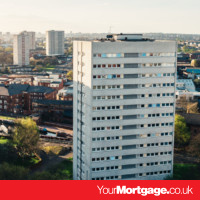Editor's Pick
Government announces £3.5bn fund to remove high rise cladding

A tax and levy for developers has also been announced as the government commits to removing some, but not all, dangerous cladding from buildings
The government will pay for all cladding to be removed from high-rise buildings over 18 metres high and introduce a new tax and levy on developers to pay for it but is saddling some homeowners with massive loans.
Leaseholders in properties below 18 metres high will have to pay towards fixing issues on those properties through government-backed loans with interest, potentially totalling thousands of pounds.
And the measures do not address other serious building defects which have also been discovered in the tallest properties.
Communities secretary Robert Jenrick announced the plans in Parliament and said leaseholders given loans will have to pay no more than £50 per month.
However, he did not answer what the rate of interest on the loans will be, if they will be attached to the leaseholder or the property and other key details.
He said the loan scheme “will provide peace of mind for hundreds of thousands of leaseholders and will be seen as generous and affordable for the taxpayer”.
The funding to remove high-rise cladding will add a further £3.5bn to the £1.6bn already pledged to remove dangerous cladding from tall buildings, and does not include the cost of the loan scheme.
Tax and levy for developers
Developers will be tagged with a levy that will only apply when developers seek permission to develop certain high-rise buildings.
And a new tax will be introduced for the UK residential property development sector in 2022 which is expected to raise at least £2bn over a decade to help pay for cladding remediation costs.
“It cannot be right that the costs of addressing these issues fall solely on taxpayers, many of whom are not themselves homeowners,” Jenrick said.
“The government has always expected the industry to contribute towards these costs and some have already done so.
“In introducing the levy we will ensure the homes our country needs get built and that our small and medium-sized builders are protected.”
He added: “The tax will ensure the largest property developers make a fair contribution to the remediation programme in relation to the money they make from residential property, reflecting the benefit that they will derive from restoring confidence to the UK housing market.”
Campaigners outraged
However, responding to leaked details of the plans, campaigners described them as a bitter disappointment.
Sebastian O’Kelly of the Leasehold Knowledge Partnership said: “It is shameful to treat leaseholders differently depending on an arbitrary factor like building height.
“Today leaseholders in tens of thousands of buildings less than 18 metres have been told they will pay 100 per cent of the costs of fixing others’ mistakes. Leaseholders in buildings above 18 metres may still face ruinous costs of fixing non-cladding defects.”
He highlighted that nearly four years after the Grenfell Tower disaster the government had repeatedly promised unsafe buildings would be remediated and leaseholders would be protected from the costs.
“To be clear, these costs are the result of systemic regulatory failure and corporate malfeasance,” O’Kelly continued.
“The government’s dither and delay has seen leaseholders risk their physical safety, suffer extreme anxiety and been held hostage in unsellable, unsafe flats.”